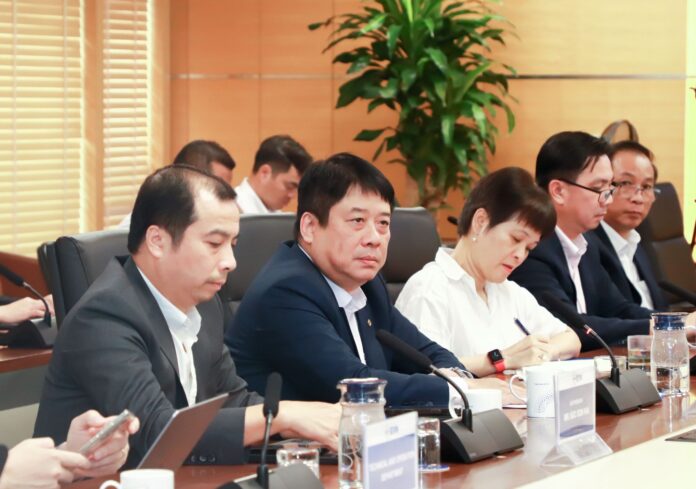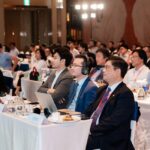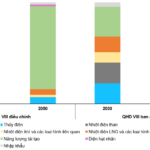On June 9, in Hanoi, EVN CEO Nguyen Anh Tuan met with a high-level delegation from Huawei, led by Zhou Haojie, Director of Operations for the Digital Power Business Group within Huawei’s Enterprise Business Group.
Ngo Son Hai, EVN’s Vice President, and representatives from specialized departments were also present at the meeting. Huawei was represented by Tao Guangyao, Regional Vice President for Asia, Zhang Feng, CEO of Huawei Vietnam, and leading experts in digital power technologies, energy storage, and smart ICT infrastructure solutions.
The discussion focused on solutions to promote digital transformation in the operation and development of modern power grids.
Zhou Haojie shared Huawei’s global experience in partnering with numerous large power companies in over 70 countries. In Vietnam, Huawei has collaborated with over 300 partners and implemented various renewable energy projects with a cumulative capacity of approximately 9GW, including large-scale and rooftop solar power.
The presented Huawei technology solutions emphasized flexible integration with existing power grids, distributed energy management, and enhanced connectivity between solar power, electric vehicle charging stations, and energy storage systems.
The smart grid architecture developed by Huawei enables the simultaneous management of new power sources, optimizes operational efficiency, and ensures system stability under weak grid conditions or a high proportion of renewable sources. These models have been implemented in various countries with diverse grid characteristics and consumption needs, such as China, Germany, Saudi Arabia, the Philippines, and Brazil.
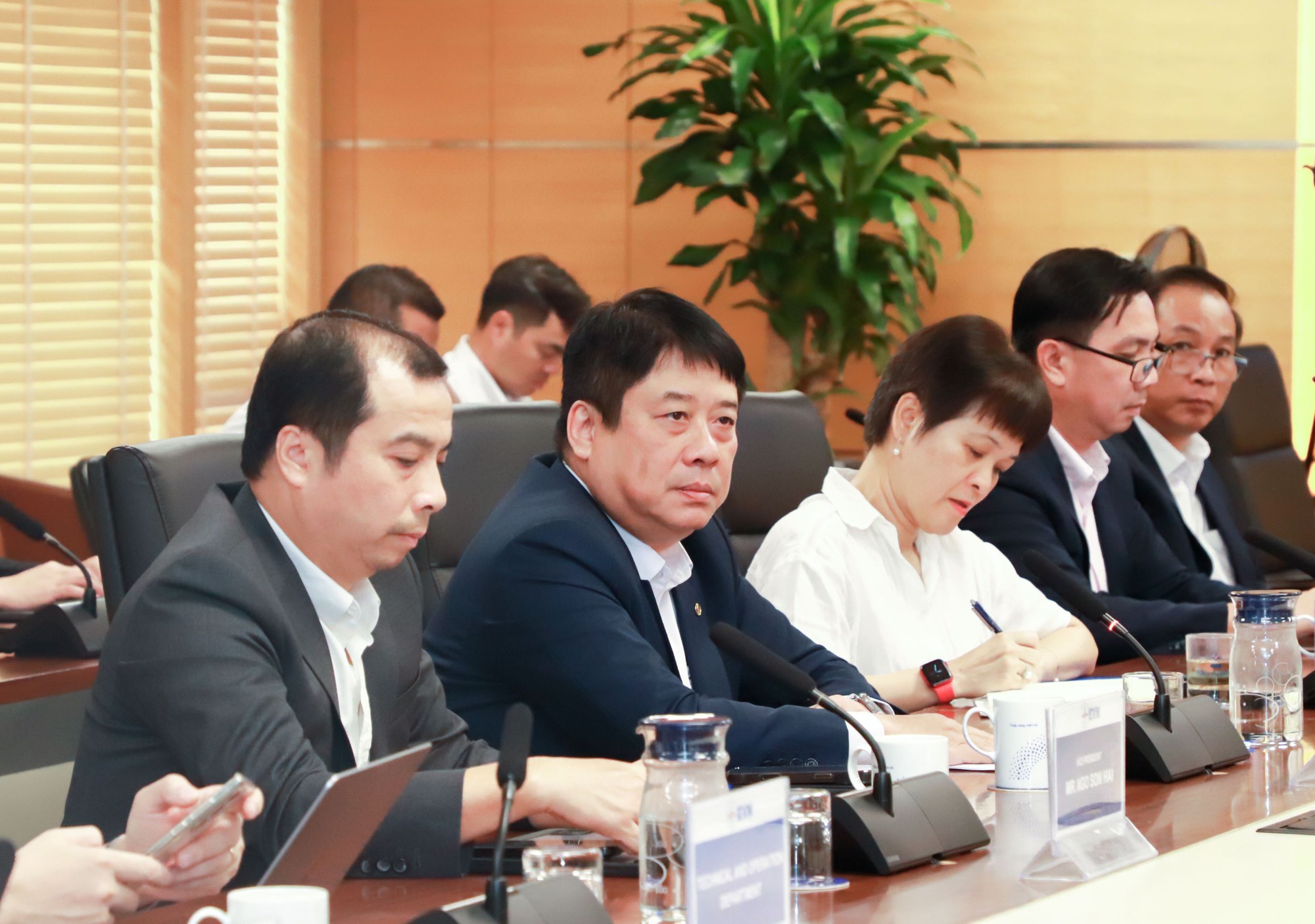
EVN CEO Nguyen Anh Tuan (second from left) chairs the meeting with Huawei’s high-level delegation
To meet the increasingly complex operational requirements of the power system, EVN’s leadership emphasized the importance of early adoption of advanced technologies in monitoring, control, and integration of distributed energy sources. Smart grids, energy storage systems, and digital operation platforms are considered prerequisites for maintaining stability, reliability, and operational efficiency across the entire system.
EVN’s management highly appreciated Huawei’s technological capabilities, strategic vision, and comprehensive solution ecosystem, expressing their expectation for Huawei’s active participation in the digitalization process of Vietnam’s power industry.
Definition of a Smart Grid
A smart grid is an advanced power system based on information and communication technologies. It performs real-time monitoring, intelligent scheduling, and optimal management of the power system through smart grids, communication networks, and computer-based sensing.
Compared to traditional power grids, smart grids provide a panoramic view of operations, network data transmission, dynamic security assessment, refined dispatch decisions, automatic operation control, and optimal machine-network coordination.
On a smart grid, two-way flow of electricity and information is ensured from power plants to end-users. The grid utilizes widespread distributed intelligence and broadband communication, as well as the integration of automatic control systems. This ensures that transactions and interactions in the power market occur in real-time and benefit from seamless connectivity.
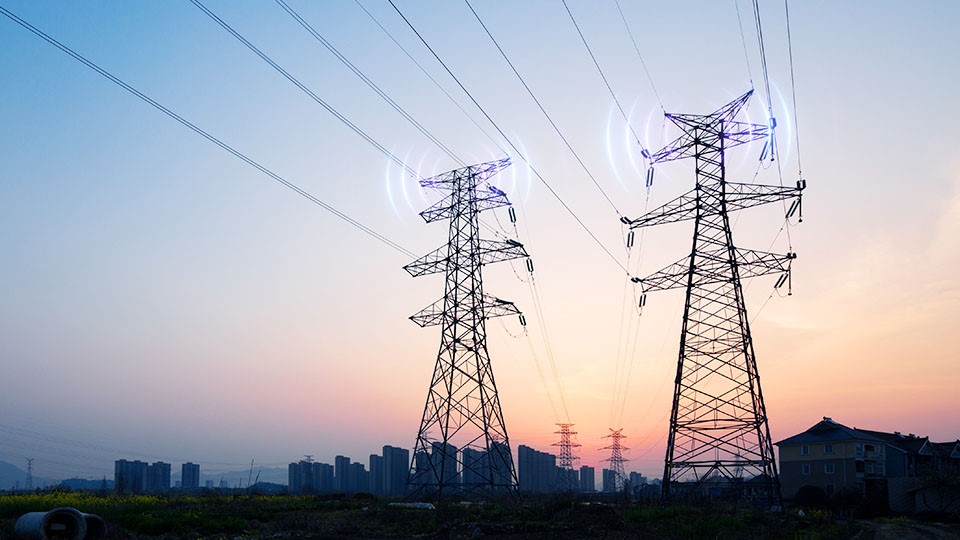
Key Components of a Smart Grid
Several key components are designed to ensure the efficient and reliable operation of a smart grid for power delivery.
1. Advanced Metering Infrastructure (AMI): AMI includes smart meters that generate real-time data on electricity usage for both consumers and utilities. This smart grid component enables accurate billing, energy management, and demand response programs.
2. Sensors and Automatic Controls: These devices are designed to monitor the performance of the power grid, detect faults, and oversee various factors in real-time. Automatic controls ensure that actions are taken instantly according to demand and supply.
3. Communication Network: A robust communication network is established through which utilities and consumers can exchange two-way information. Smart meters, sensors, and other devices support the network by transmitting data.
4. Energy Storage Systems: Energy storage systems include devices such as batteries that store energy during off-peak hours and supply it during peak demand periods. This infrastructure improves grid stability and supports smooth integration with renewable sources.
5. Distributed Energy Resources (DERs): DERs are small-scale energy sources, such as rooftop solar panels and wind turbines, connected to the grid and contribute to the diversity of energy supply, enhancing the grid’s resilience.
6. Grid Management Systems: These are software and hardware solutions implemented in smart grids, designed to manage, monitor, and enhance the functionality of the power grid. They help manage power sources and reliability while reducing operating costs.
Summary
“Huawei Digital Power: Powering Vietnam’s Low-Carbon Industrial Revolution.”
“Recently, Huawei hosted a specialized seminar, ‘Smart Low-Carbon Industrial Park 2025’ in Ho Chi Minh City. The event aimed to promote the development of green, low-carbon industrial parks, in line with Vietnam’s goal of achieving carbon neutrality by 2050. With a focus on sustainable practices and innovative solutions, the seminar highlighted the importance of embracing eco-friendly initiatives in industrial settings.”
“Science and Technology Empower Thanh Hoa’s Businesses to Soar in the Competitive Market”
“The marriage of technology and innovation is proving to be a significant driving force for businesses in Thanh Hoa province. By embracing this union, enterprises are witnessing enhanced productivity, streamlined production processes, and the development of high-quality products that are gradually conquering both domestic and international markets.”
“REE – Sustainable Growth Strategy (Part 1)”
The Ho Chi Minh City Refrigeration Electricity Joint Stock Company (HOSE: REE) is shifting its focus to renewable energy as a key part of its growth strategy for the coming years. The company is accelerating its hydropower and wind power projects and seeking new investment opportunities that align with the adjusted Power Development Plan VIII. With this direction, REE not only aims to increase capacity but also enhance operational efficiency, striving for sustainable development and keeping pace with the global energy transition.

